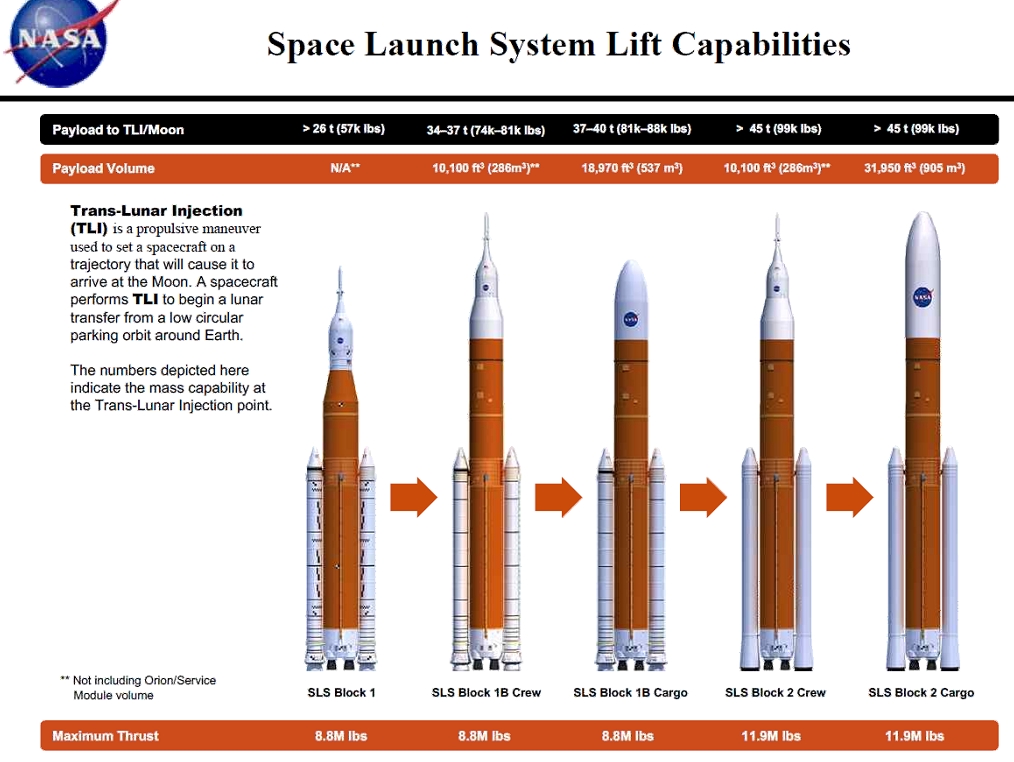Since the launch of the Falcon Heavy rocket in February, NASA has faced some uncomfortable questions about the affordability of its own Space Launch System rocket. By some estimates, NASA could afford 17 to 27 Falcon Heavy launches a year for what it is paying annually to develop the SLS rocket, which won't fly before 2020. Even President Trump has mused about the high costs of NASA's rocket.
On Monday, during a committee meeting of NASA's Advisory Council, former Space Shuttle Program Manager Wayne Hale raised this issue. Following a presentation by Bill Gerstenmaier, chief of human spaceflight for NASA, Hale asked whether the space agency wouldn't be better off going with the cheaper commercial rocket.
"Now that the Falcon Heavy has flown and been demonstrated, the advertised cost for that is quite low," Hale said. "So there are a lot of folks who ask why don't we just buy four or five or six of those and do what we need to do without building this big, heavy rocket and assemble things like we did with the space station?"
In response, Gerstenmaier pointed Hale and other members of the advisory committee—composed of external aerospace experts who provide non-binding advice to the space agency—to a chart he had shown earlier in the presentation. This chart showed the payload capacity of the Space Launch System in various configurations in terms of mass sent to the Moon.
“A lot smaller”
"It's a lot smaller than any of those," Gerstenmaier said, referring to the Falcon Heavy's payload capacity to TLI, or "trans-lunar injection," which effectively means the amount of mass that can be broken out of low-Earth orbit and sent into a lunar trajectory. In the chart, the SLS Block 1 rocket has a TLI capacity of 26 metric tons. (The chart also contains the more advanced Block 2 version of the SLS, with a capacity of 45 tons. However, this rocket is at least a decade away, and it will require billions of dollars more to design and develop.)

SpaceX has not publicly stated the TLI capacity of the Falcon Heavy rocket, but for the fully expendable version of the booster it is probably somewhere in the range of 18 and 22 tons. This is a value roughly between the vehicle's published capacity for geostationary orbit, 26.7 tons, and Mars, 16.8 tons.
Gerstenmaier then said NASA's exploration program will require the unique capabilities of the SLS rocket. "I think it's still going to be large-volume, monolithic pieces that are going to require an SLS kind of capability to get them out into space," he said. "Then for routine servicing and bringing cargo, maybe bringing smaller crew vehicles other than Orion, then Falcon Heavy can play a role. What's been talked about by [Jeff] Bezos can play a role. What United Launch Alliance has talked about can play a role."
“And,” not “or”
After this, Gerstenmaier reiterated NASA's default position with regard to the SLS and much cheaper commercial launch solutions—that there is room for everyone in the industry. "I don't see it as an 'either/or;' I see it as an 'and,'" he said. "We're trying to build a plan that uses SLS for its unique capability of large volumes and a large single mass in one launch. The cargo capability is pretty amazing with SLS. You can launch a big chunk of gateway in one flight; where it would take multiple flights, I'm not sure you could even break some of those pieces up into those smaller pieces to get them on a smaller rocket."
One difficulty with Gerstenmaier's response to Hale's question is that NASA does not, in fact, yet have any "large-volume, monolithic pieces" that could only be launched by the Space Launch System. The cornerstone of its 2020s exploration plans is the Lunar Orbiting Platform-Gateway, a small space station to fly in orbit around the Moon. The first piece of this station, a power and propulsion module, will launch in 2022 aboard a commercial rocket.
In fact, beyond this power element, NASA remains in the beginning stages of soliciting and accepting designs for the other components of this "gateway," including airlocks and habitation areas. These could, in theory at least, simply be designed to fit within the mass and size restrictions of a Falcon Heavy or other planned commercial launch vehicles. Potentially, this would save NASA billions of dollars and allow it to spend considerably more money on exploration activities.
[contf] [contfnew] 
Ars Technica
[contfnewc] [contfnewc]







